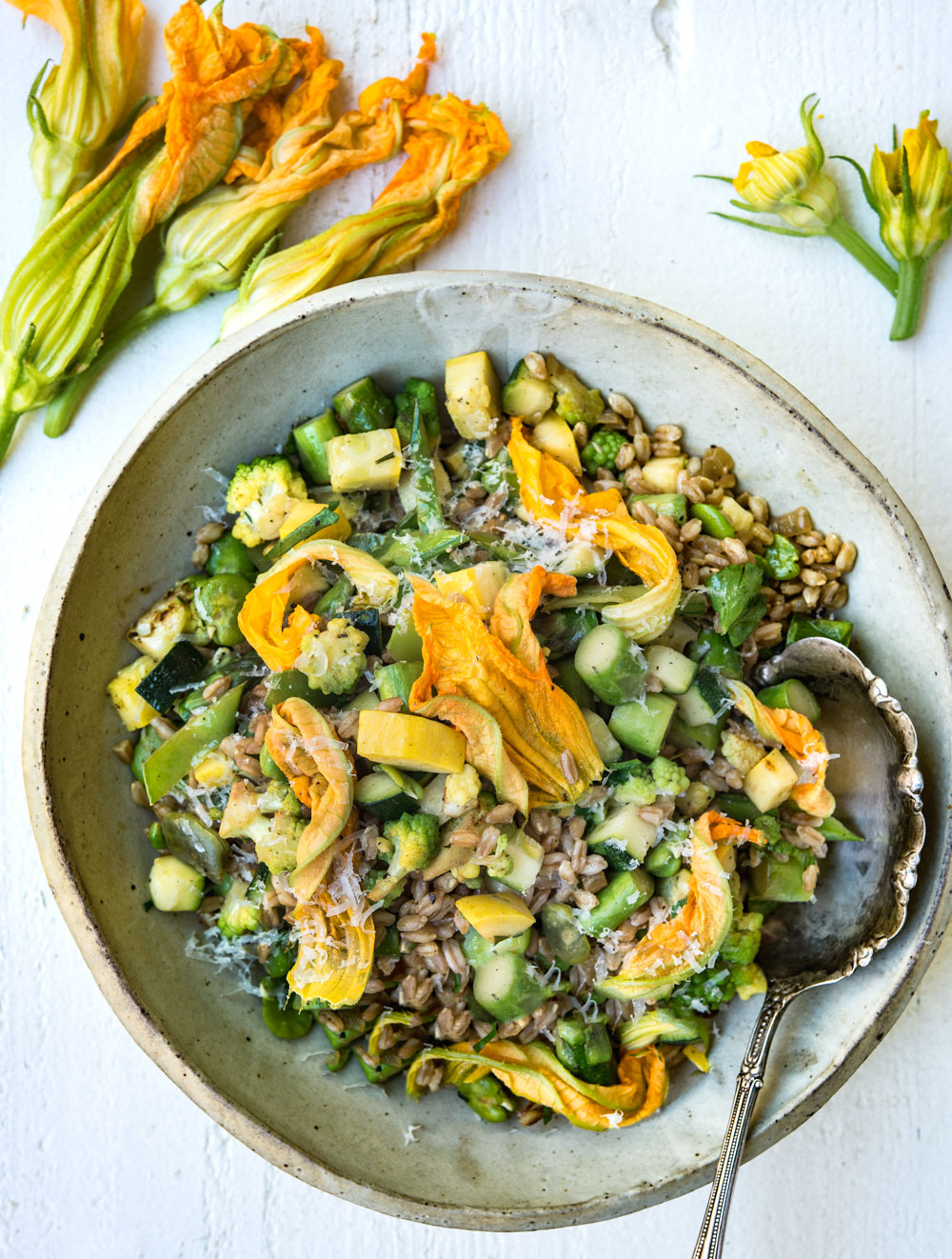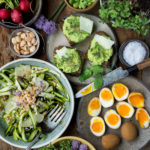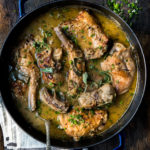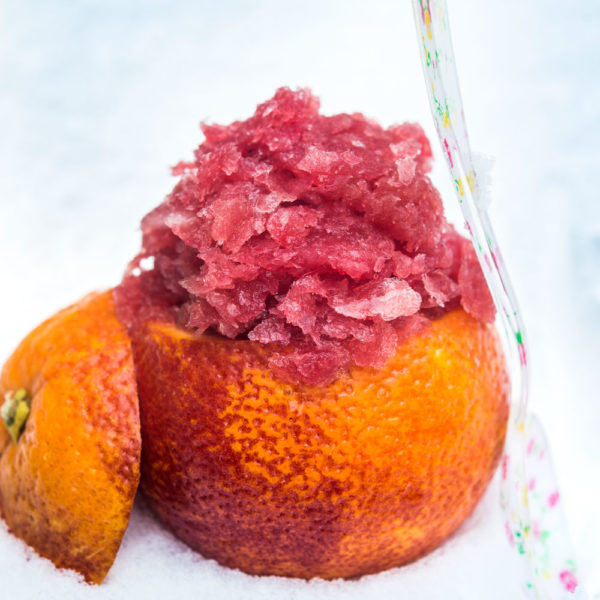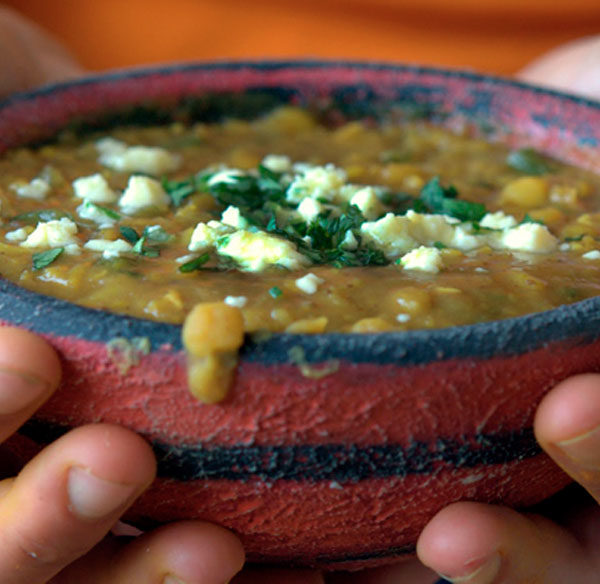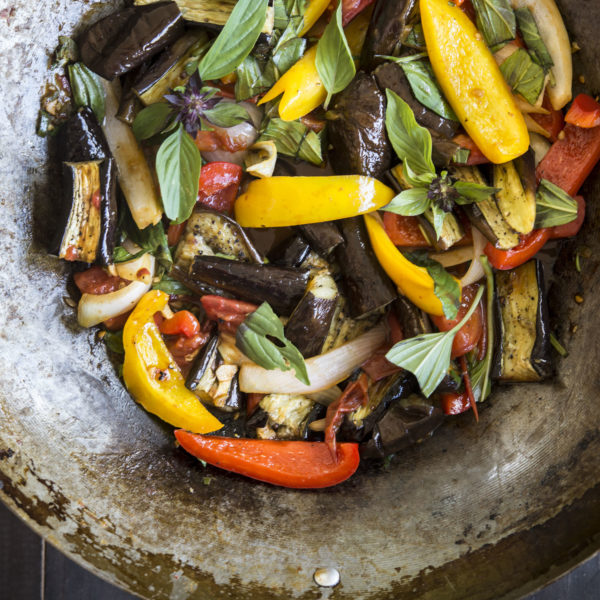I’ve recently gotten into the PBS series Mind of a Chef, which premiered in November 2012 (have quite a few seasons to binge watch). The series combines travel, cooking, history, science and humor. Each season brings with it new chefs and recipes. It’s interesting to learn how each chef’s cultural identity, family upbringing, and sense of place have shaped how they embrace food and approach cooking.
This recipe for spring farro succotash was inspired by chef Sean Brock’s (Husk and McCrady’s, Charleston, South Carolina) Farro Verde Succotash (episode 2 of season 2). It’s a celebration of spring in a bowl!
Brock uses farro verde from Anson Mills (South Carolina). Glenn Roberts, founder of Anson Mills, is largely responsible for archiving and reviving lost crops of the South. The aforementioned episode was all about seeds. While we probably don’t think much about seeds in our busy, daily lives, seeds are the foundation to much of what we eat and, of course, essential to sustainability and food security.
I had to settle for the farro that I could find at my local grocery store, which got me thinking…what exactly is farro? And what types of farro are out there?
Farro, an ancient variety of wheat, is Italian by origin. It has a nutty flavor and chewy texture. Though we refer to farro as if it were one grain, it actually has three identities:
- farro piccolo (little farro; einkorn);
- farro medio (medium farro; emmer);
- farro grande (big farro; spelt).
Emmer is what you’ll find sold most often in the United States. It’s a harder grain than einkorn and is often confused with spelt, which is another type of grain altogether.
There’s also the question of whether you should choose whole farro, which retains all the grain’s nutrients; semipearled, in which the part of the bran has been removed but still contains some fiber; or pearled, which takes the least time to cook, but has no bran at all. As for cooking times, pearled farro will take less time to cook than semi-pearled, which will take less time to cook than whole.
I bought my farro from the bulk bin, so not exactly sure which type I came away with, but will definitely be seeking out different types of farro to experiment with going forward. Am curious as to how they vary in taste and texture.
So, let’s get to the succotash…You may know succotash as a combination of corn, lima beans, and other field beans. I love Brock’s approach with his spring-focused version. While you might be tempted to add bacon or other cured pork products, he stresses that it’s not needed. Rather, let the vegetables and legumes shine.
I made a few tweaks based on what I could find locally and what was growing in my garden…
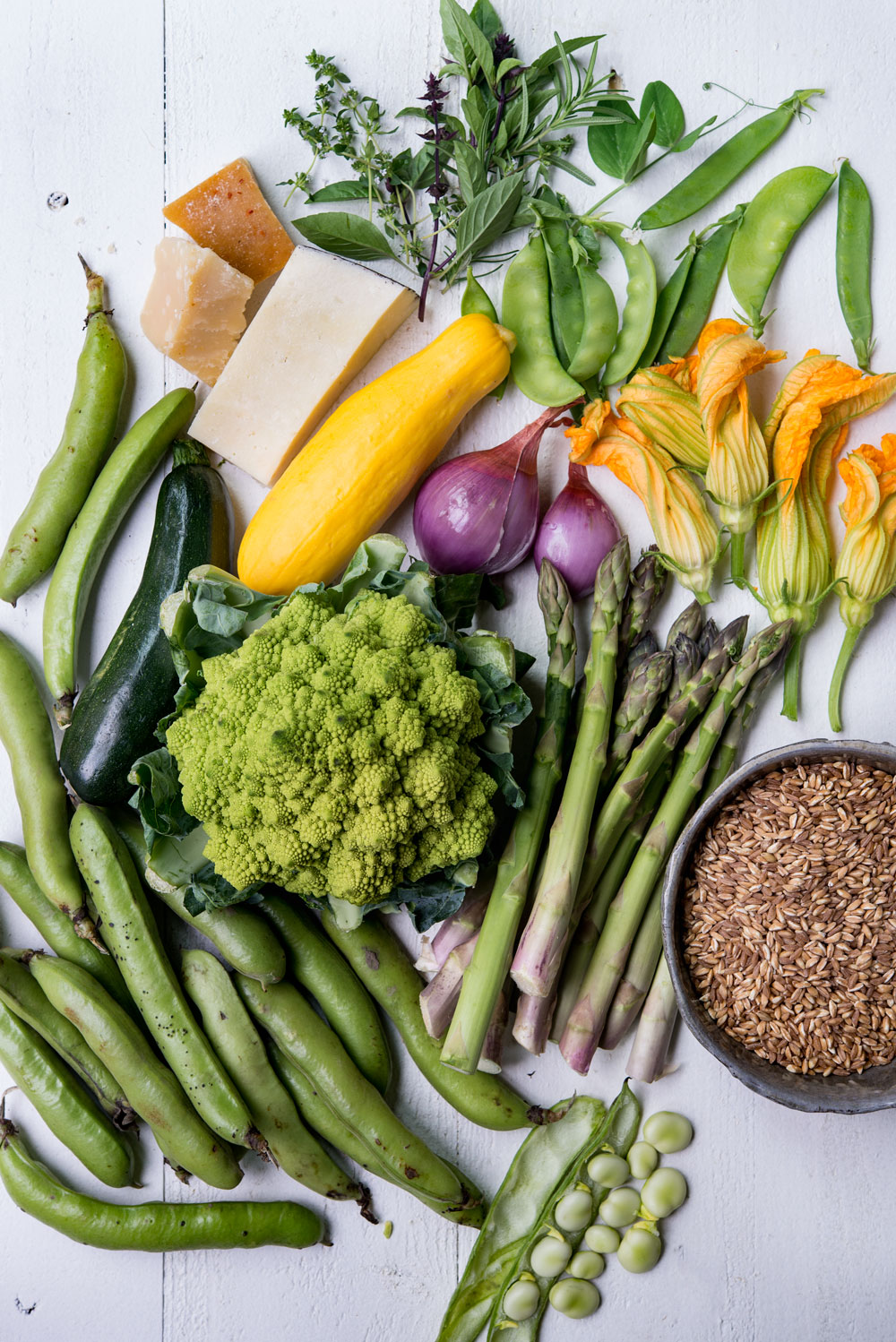
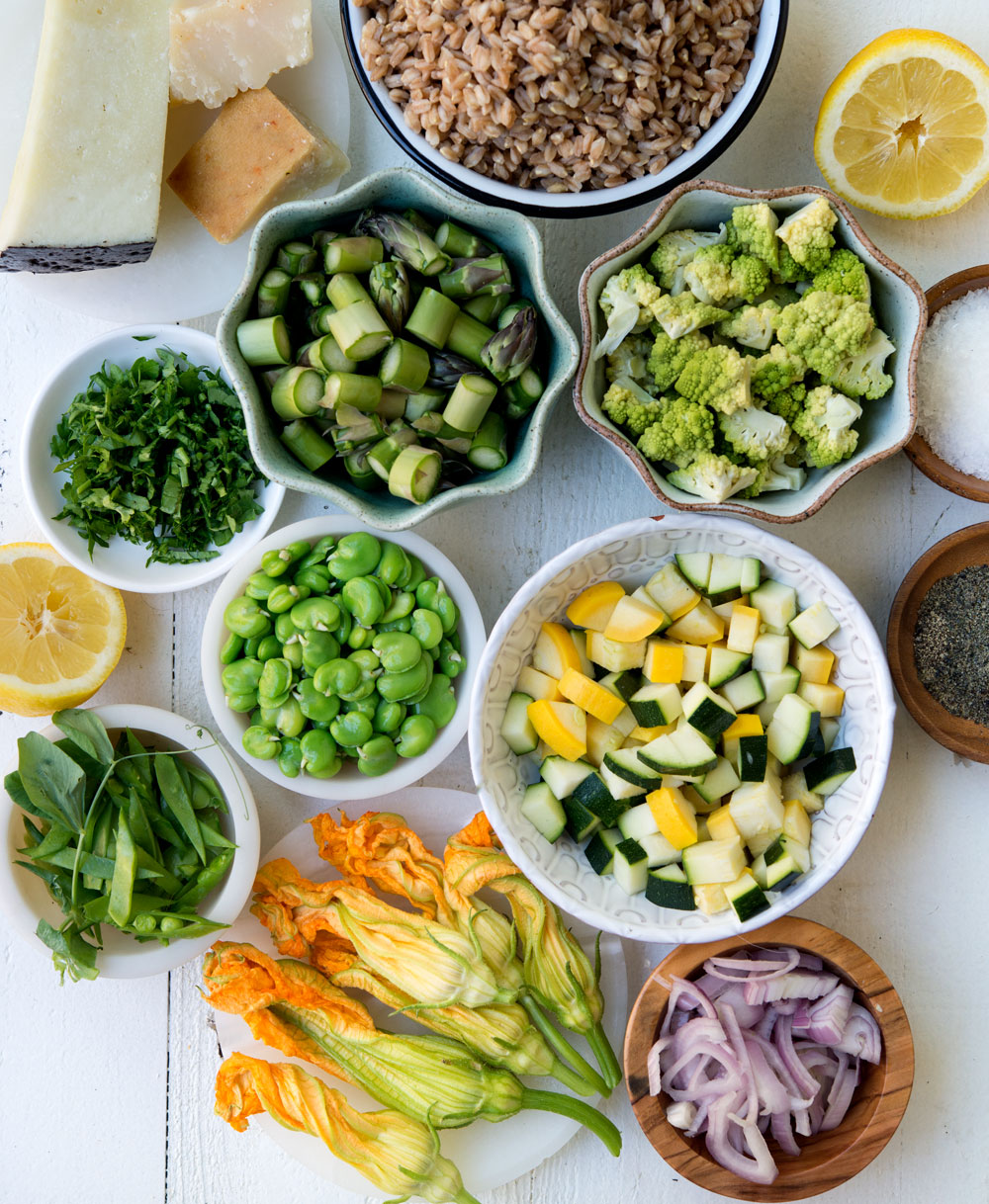
Squash blossoms make for a nice presentation (if you can’t find any, the succotash will still be very good)…
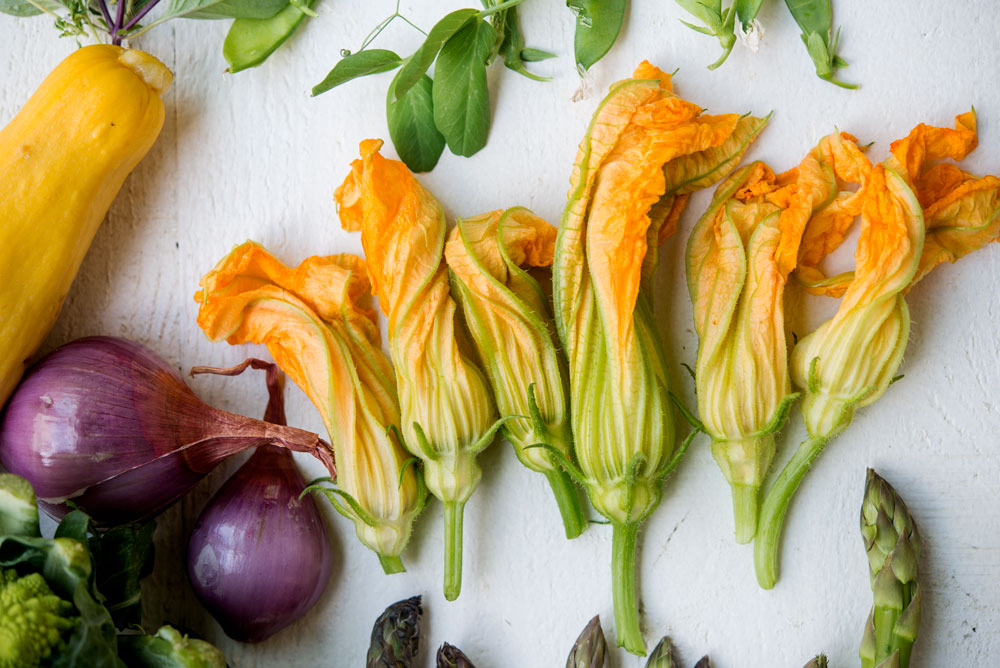
I added my first of the season snow peas into the succotash….
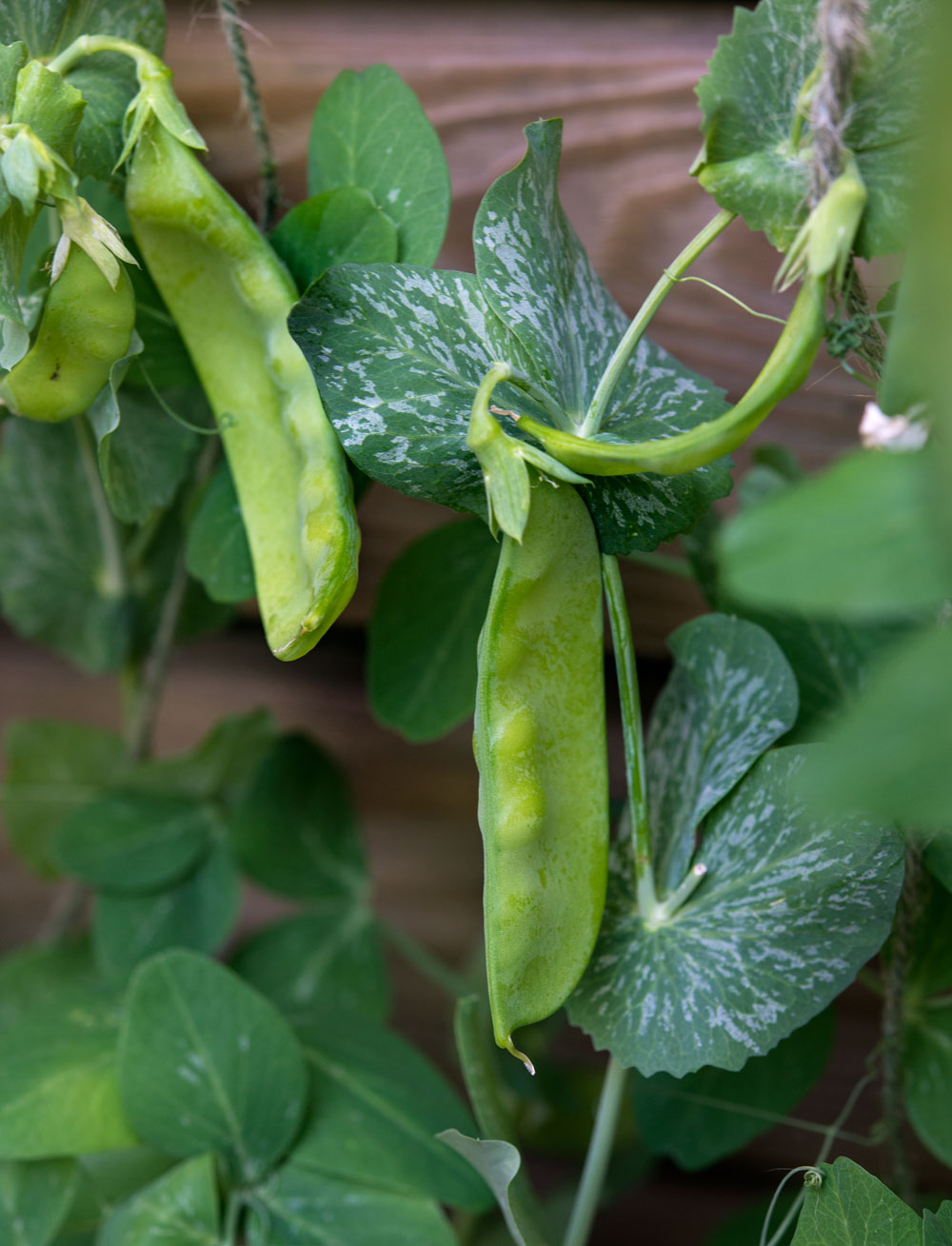
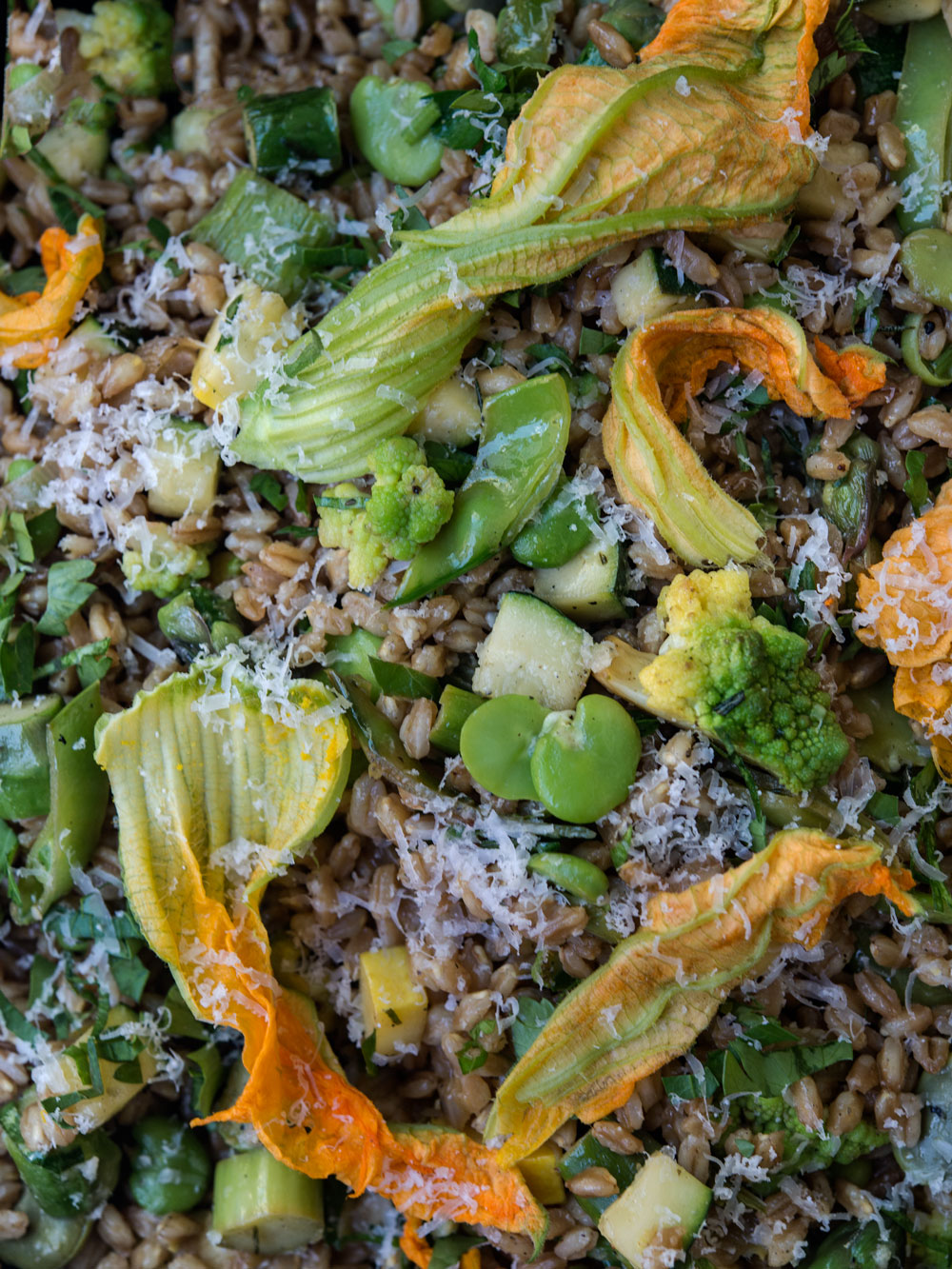
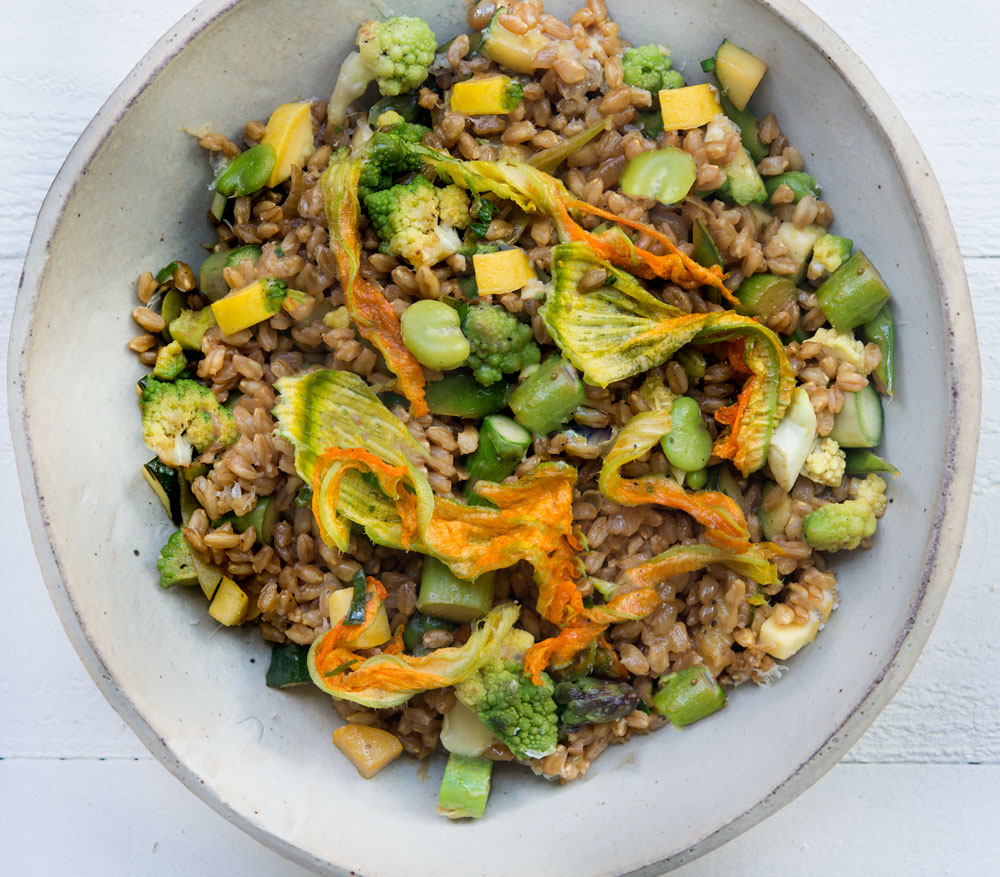
Spring Farro Succotash
Adapted from Mind of a Chef, Sean Brock.
Regardless of which vegetables you use, consider their cooking times. Cook heartier, longer-cooking vegetables, like Romanesco cauliflower, first and finish with the more delicate vegetables, like zucchini and squash flowers.
2 tablespoons unsalted butter, plus extra for serving
1 teaspoon chopped fresh rosemary
1/2 sweet red onion, peeled and sliced into 1/4-inch thick slices
1 cup Romanesco (or cauliflower) florets, cut into bite-sized pieces
1/4 to 1/2 cup vegetable stock
2 ounces chopped fresh beans, wax beans, snow peas, or snap peas, chopped into 1/3-inch pieces
1 small bunch asparagus, cut into 1/3-inch pieces
1 cup shucked fava beans, blanched and peeled, from about 1 3/4 pounds whole
1/2 cup diced summer squash
1/2 cup diced zucchini
3 cups cooked faro, cooked according to package instructions in vegetable stock
1/2 cup grated domestic aged cheese, such as farmhouse cheddar (or Pecorino or Parmesan)
Salt and pepper
3 tablespoons finely chopped parsley
1/2 lemon, juice 0r a splash of your favorite vinegar (Sherry, white wine, Champange)
3 squash flowers
Heat a large skillet over medium-high heat. Add 2 tablespoons of butter. When butter has melted, add the onion slices. Cook for 2 minutes, stirring occasionally, until just softened.
Add the Romanesco florets and cook, stirring, for 3 minutes. Add a splash of vegetable broth to keep moisture in the pan; do this as often as necessary throughout cooking to avoid scorching the vegetables.
Stir in the green beans and asparagus and cook for another 2 minutes. Add the fava beans and cook another minute. Add the summer squash and the zucchini and stir to combine. Season with salt and freshly ground pepper. Cook for 2 to 3 minutes longer.
When the vegetables begin to soften, but still retain some crunch, add the cooked farro. Break up any clumps with a spoon. Stir to incorporate and heat through, adding a splash of broth if necessary. Add half of the cheese and stir. Taste and season with salt and freshly ground pepper to taste.
Remove pan from heat. Sprinkle the chopped herbs and squeeze a little lemon juice over the top to brighten up the flavors. Stir gently.
Tear the squash blossoms and scatter pieces on top of the mixture.
Serve in individual dishes with a dollop of unsalted butter and grated cheese on top
